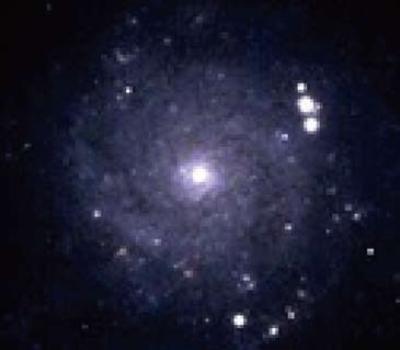
Supernovae are explosions of stars at the end of their lives. Core-collapse supernovae (Type II, Ib, and Ic) are the outcome of the gravitational collapse of massive stars (i.e., more than ten times as massive as the Sun), followed by formation of a neutron star or a black hole, announced by a huge amount of neutrinos. Thermonuclear supernovae (Type Ia) are explosions driven by nuclear reactions within a white-dwarf star.
Supernovae provide natural laboratories for a range of physical processes, such as neutrino physics, some of which cannot be addressed by experiments on the Earth. Furthermore, they are the main contributors of heavy elements in the Universe; without them, baryons in the Universe would be only hydrogen, helium and some minor elements, although in reality the Universe is filled with about a hundred different sorts of elements. Their energy produced at the explosions is huge, and supernova explosions could play important roles even in formation and evolution of galaxies. Finally, importance of understanding their natures is highlighted by their use as cosmological distance indicators, leading to the discovery of the Dark Energy. Furthermore, recent detections of gravitational waves from binary neutron-star/blackhole mergers have renewed the importance of understanding their progenitor stellar evolution and supernova explosions.
Our understanding of the above issues is still far from satisfying, with various issues still under investigation. At Kavli IPMU, we cover most of the topics related to supernovae both in theory and observation/experiment; Evolution of stars toward supernovae, theory of explosions, attempt to detect these neutrinos at Kamioka, nucleosynthesis of elements up to iron and beyond, formation of dust grains, theory of optical emission from supernovae and evaluation of their use as cosmological distance indicators, and observations using the Subaru Telescope including the large survey with the Hyper Supreme-Cam (HSC). One of the recent hot topics is the study of the nature of supernova explosions of the first generation of stars in the Universe. We take various different approaches including numerical simulations and observations of ancient stars in the Milky Way Galaxy to investigate the physical properties of the first supernovae, their effects on the structure formation/chemical evolution in the early Universe, the nature of their compact remnants (neutron star or black holes). Our studies provide important predictions for observations of high-redshift supernovae or detection of gravitational waves by next-generation observational facilities. By unifying these attempts, we aim to comprehensively understand supernovae and their influences on the evolution of the Universe. (Last update: 2018/05/15)
Links
- Related Observational Project:Hyper Suprime-Cam (HSC)
- Related Observational Project:Super-Kamiokande
Members
- Shin'ichiro Ando
- Melina Bersten
- Gaston Folatelli
- Katsuki Hiraide
- Raphael Hirschi
- Shunsaku Horiuchi
- Miho N. Ishigaki
- Amanda Karakas
- Chiaki Kobayashi
- Alexander Kusenko
- Shing Chi Leung
- Marco Limongi
- Kai Martens
- Anupreeta Sadashiv More
- Surhud More
- Shoei Nakayama
- Ken'ichi Nomoto
- Robert Michael Quimby
- Andrew Santos
- Katsuhiko Sato
- Aurora Simionescu
- Tadayuki Takahashi
- Mark Vagins
- Naoki Yasuda
- Naoki Yoshida






